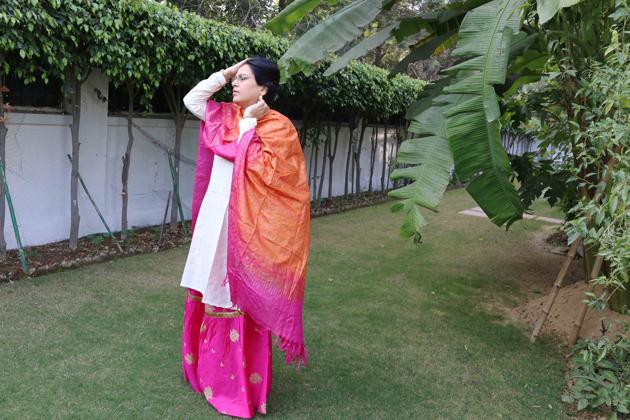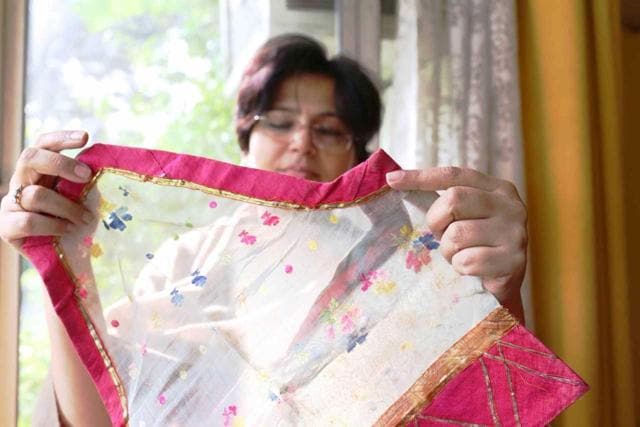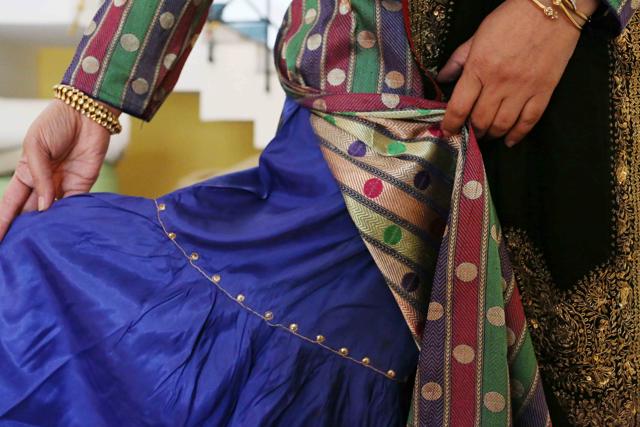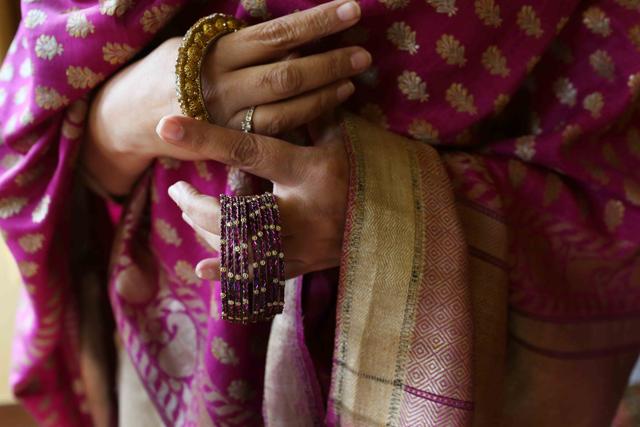NEW DELHI:
A peek into a precious wardrobe of strange outfits that are fast becoming invisible from Delhi evenings.

The other day, we spot a strange outfit. It is neither a skirt, nor a gown, and definitely not a sari. It is also not a pajama.
What is it, we ask.
“It is gharara,” says author Rakhshanda Jalil, pronouncing the ‘gh’ from the base of the throat.
We are at Ms Jalil’s home in central Delhi. Her most precious wardrobe is a treasure-house of about two dozen ghararas. Most have been passed on to her from her mother and mother’s mother; a few are even older.
Indeed, Ms Jalil has a fascination for souvenirs of the past. One of her many books is titled Invisible City: The Hidden Monuments of Delhi. Ghararas, too, are fast becoming invisible from Delhi evenings, although Ms Jalil is often spotted wearing it in literary gatherings.

Years ago, she had worn a pink gharara for her wedding. Her two young daughters also wear it on during special occasions such as… well, weddings, particularly in Uttar Pradesh, where more people are likely to be similarly attired.
It is not unusual in Delhi weddings to see women in gharara’s sister dresses, such as the lehenga and the sharara — which is like flared pants. The gharara is more complicated. Each leg is comprised of two parts. The first goes down from the waist to the knee, and the second, which is much wider, begins from the knee and goes down to the foot.

Truth be told, Ms Jalil prefers saris and trousers for ordinary outings. But the gharara was the daily costume of her maternal grandmother, Zahida Suroor, who lived in the university town of Aligarh. “In my grandmother’s time, it was common for women to wear cotton ghararas made of chintz (called chheent by Urdu speakers) at home,” says, Ms Jalil. “Silk or satin ghararas were worn on formal occasions. And the heavy brocade, called kamkhaab, was worn at weddings.”
Each gharara should have its own kameez and dupatta, though these days one has more liberty to mix and match. Ms Jalil says that back in the day an entire gharara was sewn in four or five days. Each piece was stitched by hands. The entire hem was turned in with tiny invisible stitches. Sparkling bits of gold lace were tagged to camouflage the joints at the knees.

Ms Jalil’s mother, Mehjabeen, recently hand-stitched a red gharara for her. The happy daughter gave it a trial run at a dinner in her own home. There was much applause. The gharara came with a short white shirt. The red dupatta was lined with gold frills.
In the old days, women of a family gathered together to sew a gharara if it had to be made for a bride’s trousseau. Neighbours and friends also chipped in. Opinions were eagerly sought on the design, and the leftover cloth was never thrown away — it was used to make an accompanying batua (wallet), or jootis (sandals).

There was a time when a few cities were known to make special types of ghararas, says Ms Jalil. Benares was famous for its brocade ghararas, with master-weavers painstakingly transporting the design to lighter gauzier material for the accompanying dupatta. Lucknow favoured a patchwork design called chatapati. Delhi specialized in something called ‘farshi’, with a long train that women were supposed to hold delicately in their arms.
Perhaps the most ideal way to study this old-world costume is to ask the wearer to sit still. On request, Ms Jalil settles down beside a window with an Eric Segal novel. While the book belongs to her elder daughter, Aaliya, the gharara belongs to her great grandmother. Made of atlas (no relation to the book of maps), the fabric is so fragile that it can tear at the slightest tug. It has a blue background with yellow, orange and pink flowers. At one point, Ms Jalil looks out of the window. Her gharara ceases to be a dying tradition, and seems very much a part of the present.

source: http://www.hindustantimes.com / Hindustan Times / Home> News> Cities>Delhi News / by Hindustan Times / by Mayank Austin Soofi / October 09th, 2017








